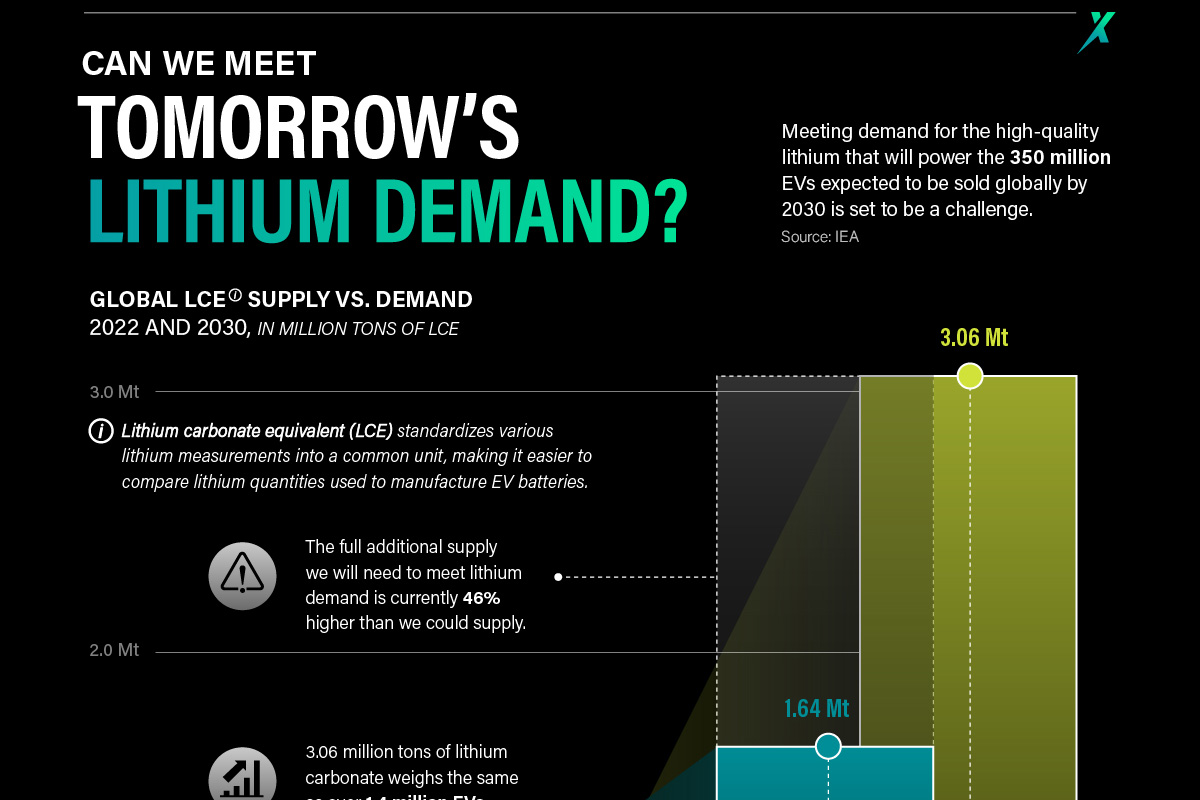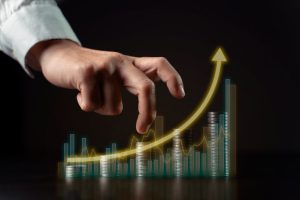
Can We Meet Tomorrow’s Lithium Demand?
Lithium is one of the world’s most critical natural resources and is central to our push toward sustainable energy.
In this graphic, sponsored by EnergyX, we ask that with over 350 million EVs expected to be sold globally by 2030, can we meet tomorrow’s lithium demand?
Addressing Tomorrow’s Lithium Problem
The lithium that powers EV batteries is refined from compounds found in multicolored pools of salt-brine or hard rock, and quantities are measured in terms of lithium carbonate equivalent (LCE).
So, to power the vast quantity of EVs being produced worldwide, a consistent and reliable supply of lithium is required. However, with forecasted annual demand growth of up to 20% by 2030, the current supply of lithium will not be sufficient to meet the demand, and nearly double the amount will be required.

Extracting a Solution
One of the main reasons why lithium demand is set to outstrip supply so aggressively is that conventional methods of extracting lithium are slow, outdated, and often cause environmental harm. However, a new way of lithium extraction, called direct lithium extraction (DLE), could resolve the supply problem.
DLE boasts a lithium recovery rate of 90%, surpassing conventional processes by 300%. This process also allows for lithium extraction from previously untapped sources, including California and the Smackover region in Arkansas.
Additionally, DLE is exceptionally efficient, taking only two days to process a lithium deposit, a process which would typically take 18 months. This process is also more environmentally friendly as producing one ton of lithium conventionally requires over 2.2 million liters of fresh water, whereas DLE requires minimal quantities.
A Path Forward
Without action, by 2030, there won’t be enough lithium to meet the combined demands of the clean energy transition and the UN’s sustainable development goals.
However, advances in DLE by pioneering companies like EnergyX could help meet the demand and ensure the transition to a more sustainable future.







